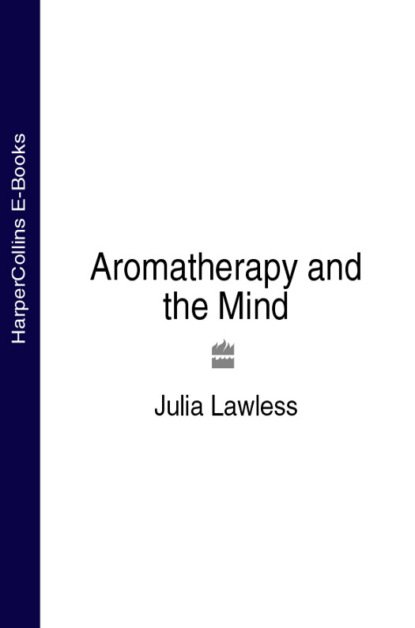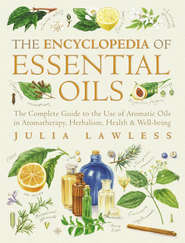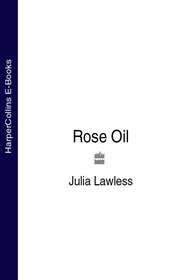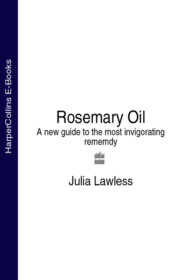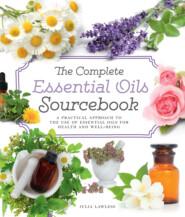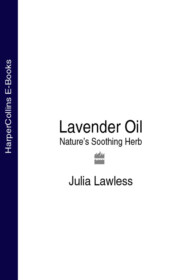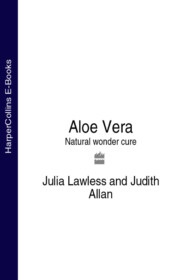По всем вопросам обращайтесь на: info@litportal.ru
(©) 2003-2024.
✖
Aromatherapy and the Mind
Настройки чтения
Размер шрифта
Высота строк
Поля
The sacred dimension of the healing arts remained strong for thousands of years, as long as the interrelatedness of the body, mind and spirit was understood. Not only was this attitude dominant through the ancient civilizations of Mesopotamia, Egypt, Babylon and Greece, it was also prevalent in the Far East and in the West until the Middle Ages.
One of the earliest civilizations to develop a high degree of refinement was Mesopotamia, in the Near East around 3500 BC, whose most prominent city-state was Sumer. The Sumerian legacy to the healing arts has been especially profound and enduring. The oldest medical text in existence is recorded on two clay tablets from the Sumerian period.
Early Sumerian society was based on matriarchal principles, and the Mesopotamian goddess Ninlil was revered as protector of plants, crops, fertility, birth and death. Initially women had an important role in the healing arts and were included in all aspects of medical practice. There were two categories of practitioners: the Ashipu and the Asu. The former worked in the invisible or magical realm as a shamanic type of healer; the latter were versed in the botanical prescriptions used primarily to influence physical health. Aromatics featured largely in their culture and a clay pot that was possibly used for the distillation of plant essences has been found in a grave site dating back to 5500 BC. Gradually the Sumerians’ knowledge and theories of medicine were carried via trade routes to the Phoenicians, Egyptians and Greeks. In this way, their civilization sent forth fingers of myth and culture into the surrounding regions which dominated the heritage of the Western world.
Egyptian medicine also dates back to prehistoric times and was supposed to have originated with the mythological deities of the country, notably Thoth, Osiris, Isis, Horus and Imhotep. It was practised largely by the priests and priestesses of these divinities, and consequently the preparation of remedies was generally accompanied by incantations and evocations. The ancient Egyptians were especially skilled in pharmacy, which is said to have been transmitted originally by the goddess Isis to her son Horus, who then communicated it to the priesthood. The ‘Hermetic’ medical books, having been given out by the god Thoth, came to be regarded as sacred, and any deviation from their rules as sacrilege. In the process of time, specialist healers developed who were knowledgeable about specific types of disease and their manner of treatment.
One of the earliest medical works on materia medica, pharmacy and therapeutics is the Egyptian Papyrus Ebers manuscript, discovered near Thebes in 1872. Written about 1,552 BC in the time of Moses and before the exodus of the Israelites from Egypt, it contains numerous formulae for compounding various remedies and their methods of use. Saffron was employed as a condiment and perfume material; galbanum was used as an incense material; eagle wood was also used as an incense and for embalming the dead; cannabis or Indian hemp was used as a sedative and for its narcotic effect; mastic was much used for fumigation purposes, as were frankincense and myrtle.
Fumigation with fragrant herbs was one of the principal remedial and preventative measures in the treatment of disease used by the ancient Egyptians, Babylonians and Hebrews. Other aromatics which were common to all these cultures were myrrh, cumin, coriander, cyperus and balm of gilead.
Medicine was, however, still bound up with magical practices and most cures required a combination of physical remedies, spells and prayers. An ancient Babylonian tablet contains the following incantation for fever:
The sick man … thou shalt place
… thou shalt cover his face
Burn cypress and herbs …
That the great Gods may remove the evil
That the evil spirit may stand aside
… may a kindly spirit, a kindly genius be present.
(#ulink_4463becc-9358-55bf-b1b3-17382b4bdd27)
Spices and herbs were thus seen not only as physical remedies but also as ‘charms’ or ‘magical drugs’ which could influence the mental disposition of the patient and provide a mediating element through which a psychic healing could take place.
This was especially true of the ancient Greek cult of Asclepius. Like the Egyptian legacy, the primitive period of Greek medicine was part mythical, part historical. It begins with Melampus (c.1400 BC) and ends with Hippocrates (c.460 BC), but the most prominent figure during this period was Asclepius, reputed son of Apollo and Coronis. As the god of medicine he was worshipped by the Greeks and Romans alike, yet it is likely that his character was founded on that of an actual healer. The cult of Asclepius, which was centred around Epidaurus, combined magical or primitive therapeutic methods, such as the use of incantations, offerings and exorcisms, with an empirical approach, in which the overall psychological effect was considered paramount. Hundreds of temples were erected in Asclepius’ honour and for many years priest-physicians, known as Asclepiades, practised a popular form of healing in these sanctuaries.
Central to their practice was a belief in the transformational relationship between the life-force and its housing – the body. The key to curing the body lay primarily in re-activating the primary life-force. Prayers and sacrifices were offered, and the sick were required to undergo a period of seclusion during which their dreams were recorded and interpreted by the priest-physicians. These were used as a means of insight into the cause and cure of the affliction, in much the same way as the traditional shaman sought out the roots of illness by assuming a trance state. Records of the cases, symptoms, treatment and results were carved upon votive tablets and hung upon the walls of the temples. The recipes for the therapeutic perfumes and incense which were used to enhance the psychological state of the patients are also recorded on some of these tablets. By the fourth century BC this type of healing had spread all over the Hellenic world and in some respects it was the forerunner of modern psycho-therapeutic practice.
Dioscorides (c. AD 100), the most renowned writer on materia medica of this period, mentions over 700 plants which were in use at the time and it may be assumed that they formed the basis of the remedies used in the temples of Asclepius with their focus on psychic medicine. In his De Materia Medica, a work which comprised the combined herbal lore of the Egyptians and Greeks, he discusses the components of perfumes and their medicinal properties, as well as listing detailed recipes. For example, he describes the perfume ‘Susinum’, as containing cardamom, cinnamon, lilies, myrrh, saffron, balanus, wine and honey. Among other aromatics mentioned are: absinthe, anise, balm, basil, calamus, chenopodium, clove, coriander, cumin, fennel, frankincense, galbanum, garlic, hyssop, juniper, laurel, marjoram, melilot, mint, mugwort, myrtle, narcissus, nard, origanum, pennyroyal, pepper, pine, rock rose (labdanum), rose, rosemary, rue, sage, styrax, tarragon, thuja, thyme, turpentine, verbena, violet and wormwood.
However, the most extensive literary information about the early therapeutic use of aromatics and their effect on the mind comes from the classical writer, Theophrastus (c.300 BC). In his Enquiry into Plants, Theophrastus describes the properties of various oils and spices and explores the qualities of the odours themselves. He mentions specific herbs which affect the mental powers: two varieties of a plant known as strykhnos (a type of thorn apple), one which upsets the mental powers and ‘makes one mad’ and another which induces sleep. He also mentions the root of onotheras (oleander) which, when administered in wine, makes the ‘temper gentler and more cheerful’.
In ancient Greece, physicians who cured through the use of ‘aromatic unctions’ were known as Iatralypte. Scented ointments and oils were recognized as having great benefit on both the physical and psychological level. Bay laurel was used to produce a trance-like state, and roses, costus, myrtle and coriander had aphrodisiac properties, while myrrh and marjoram were considered soporific. The Greek physicians adopted many of the Egyptian perfume/remedy formulations, including ‘The Egyptian’ and ‘Kyphi’ – which were said to cure by ‘transfer of sympathy’. A substance such as ‘Kyphi’, which contained 16 different ingredients, could be used as a perfume, an incense or a medicine. It was said to be anti-septic, balsamic and an antidote to poison which, according to Plutarch, would ‘lull one to sleep, allay anxiety and brighten dreams … made of those things that delight most in the night’.
(#ulink_d2a1d2b3-9bff-5888-900e-580637e25135)
Another such drug was the miraculous drug nepenthe, described in The Odyssey, that Helen of Troy (c. 2000 BC) is supposed to have obtained from Egypt. The drug has been the subject of much controversy – opinion varies as to whether it was concocted from opium, datura, cannabis, evening primrose or verbena and adiantum mixed:
And now she dropped into the wine they were drinking
a drug – an anodyne, bile-allaying, causing one to forget all ills …
(#ulink_8c032f52-b98a-54ce-857f-49356bff87c8)
Helen and the other Homeric heroes and heroines had a credible pharmacopoeia, particularly for relieving pain and altering moods. Mention is made of hellebore, mandrake and poppy juice, inhaled from a steaming sponge. Poppy (later purified opium) was used as an anaesthetic, belladonna and mandrake as anti-spasmodics, cannabis as a euphoric and in the treatment of bronchitis. Myrrh also had its uses – added to wine, it comforted the mind and produced a trance-like state. This property was later utilized by a group of Jewish women known as ‘The Daughters of Jerusalem’, who offered victims due to be crucified a wine in which myrrh had been dissolved, to help relieve the pain. Frankincense dissolved in wine was also used as a general anaesthetic.
THE MIND/BODY SPLIT
Yet, it is with the Greeks that the first signs of a division between the mind and the body, the human and natural realm, became apparent. This development heralded the abandonment of ‘magical medicine’ in favour of ‘scientific materialism’. In his book The Return of the Goddess, E. Whitmont traces the evolution of consciousness from the magical, through the mythological to the mental phase – the age of reason.
The mythological phase of consciousness is a bridge from magical to mental functioning. As the hot lava of the magical level is touched by the first, cold air of the discerning mind, it gels into forms … It marks the transition from a gynolatric to an androlatric world and reaches back to the cult of the Goddess and her child consort who constantly dies and is reborn.
(#ulink_a4783239-250e-5344-8b9d-1165d307d0a8)
In the magical and early mythological phase, dominated by worship of the Goddess, everything was seen as partaking of mana, everything was seen as sacred. Aromatics, with their inherent connection to the magical, non-material aspects of existence, were throughout this period regarded as valuable tools of transformation. But as rational, patriarchal consciousness gained the ascendancy, the non-rational, intuitive feminine principle was relegated, as was the woman’s role in healing. Subduing the passions meant repressing the feminine aspect and upholding the masculine ideal of ‘self-control’. Since odour provided a direct doorway through to the feminine part of the mind, the non-rational or ‘magical’ domain, the ancient preoccupation with aromatics as ‘mind-medicine’ also began to wane.
Hippocrates, the son of a priest-physician of Asclepius, was the first to formulate a new approach to medical practice. He separated medicine from priestcraft by maintaining that disease was not due to possession by evil spirits or the like, but to an imbalance of fluid matter related to internal, emotional and external factors. He developed a new theory of disease based on the four elements and the four humours. According to his theory, earth was associated with black bile, air with yellow bile, fire with blood and water with phlegm. One’s temperament and constitution were dependent upon the balance of these qualities. If the body was too cold and dry, for example, it indicated an excess of black bile, so there would be a tendency towards melancholy.
But just as physical illness could be seen to affect the mind, so stress and powerful emotions could influence the body and its behaviour:
Fears, shame, pain, pleasure, passion and so forth: to each of these an appropriate member of the body responds by its action. Instances are sweats, palpitation of the heart, and so forth.
(#ulink_321d3c7e-ed0e-5116-8d3c-5a3dc8643b69)
Hippocrates recognized a psychosomatic unity in mental and physical diseases, for he wrote: ‘In order to cure the human body it is necessary to have knowledge of the whole.’
(#ulink_6667aea2-9a1a-5be0-8d3c-f84cad3ae696) As part of his treatment, he prescribed aromatics, such as the famous megalion, made from myrrh, cinnamon and cassia, which, like the Egyptian ‘Kyphi’, functioned both as a physical remedy and as a mentally reviving elixir. He also maintained that the key to good health rested on having a daily aromatic bath and a scented massage. However, although Hippocrates and the other great minds of his time drew extensively on the wisdom of Mesopotamia, Egypt and Babylon as well as the other great medical traditions of the East, disease was now regarded primarily as arising from natural causes which could be located in the physical body.
Following Hippocrates’ scientific method, Galen (AD 130–200) described disorders in terms of warmth, cold, dryness and moisture, and erected the foundations of modern physiology. All diseases, mental as well as physical, were, according to Galen, due to a disorder of the humours. He was disdainful of the magical element inherent in Egyptian healing methods and wrote disapproving of the ‘… silly Egyptian spells with incantations, which the Egyptians utter while picking their herbal drugs …’.
(#ulink_08d8bbf1-49b6-5ed7-b9fd-95d9c559eb6d)
That this development took place at the expense of sacrificing the psychological aspect was recognized by Socrates, when he quoted the Thracian king Zamolxis’s views on treatment:
… as you ought not to attempt to cure the eyes without the head, or the head without the body, so neither ought you to attempt to cure the body without the soul; and that is the reason why the cure of many diseases is unknown to the physicians of Hellas.
(#ulink_b0e7756b-cc2d-57fc-9234-3472901a2cca)
Nevertheless, herbal remedies still constituted the main materials at the physicians’ disposal, and aromatic plants and essences were still used widely. Fragrant oils were commonly used for basic hygiene, especially when water was scarce and soap non-existent. Evidence from Egypt, Greece, Rome and the Near East indicates that both men and women oiled their skin as well as their hair with fragrant lotions to prevent dryness and keep the skin supple, while perfumes were used to mask less pleasant odours. Homer frequently mentions oils being applied after a bath or instead of one! Scent was still considered to be the most effective way of cleansing polluted air, and bonfires of scented wood and flowers permeated with perfumed unguents were lit in the streets of Athens during times of plague.
Aromatics were also still valued for their soothing or stimulating properties. The Greeks described the scent of hyacinth as being uplifting and invigorating to a tired mind, and Galen considered the fragrance of narcissus oil to be ‘the food of the soul’. In the Greek world, the need to take care of the body was also to a great extent connected with sport. During the great games at Daphne, the Greek king employed 200 girls to sprinkle rosewater on the crowd to refresh their spirits. Before a competition, the athletes would oil their skin and sprinkle it with a powder appropriate to the type of sport they were doing. In private houses too, anointing the body with oil was a routine matter for maintaining health and beauty.
Perfume also played a central role in the Roman ritual of bathing. It was employed in three principal modes: solid unguents (hedysmata) – generally a single scent such as almond, rose or quince; liquid unguents (stymmata) – compounded perfumes containing flowers, spices and gums; or powder perfumes (diapasmata) – pulverised aromatics. Thus incense and perfumes continued to be used in lavish quantities both for pleasure and for the effect they had on the mind and spirit.
THE CHRISTIAN LEGACY
Christian theology forged an absolute gulf between humanity and nature. Pagan worship of the divinity within nature was rejected.
(#ulink_38c10cf6-3521-5b84-ac4d-5c5222a56dce)
Under the Romans, however, as the papacy grew in strength, the Church became increasingly sensitive to any competition from physicians with regard to the cure of the mind or soul. The third century AD also witnessed a rapidly shrinking market for myrrh and frankincense, due to the opposition of the early puritanical Christians to what they saw as ‘pagan fragrances’. In their eyes, the human body and its natural instincts were something to be regarded with distrust and repulsion and, since perfumes and incense stimulated the senses and could be used to heighten sensual pleasure, they were rejected by the Church.
Then in AD 529 Pope Gregory the Great passed a decree that forbade any form of learning that was not acceptable to the political ambitions of the papacy. This included knowledge of materia medica. The School of Philosophy at Athens was closed the same year and the works of Galen and Hippocrates had to be smuggled to Syria.





